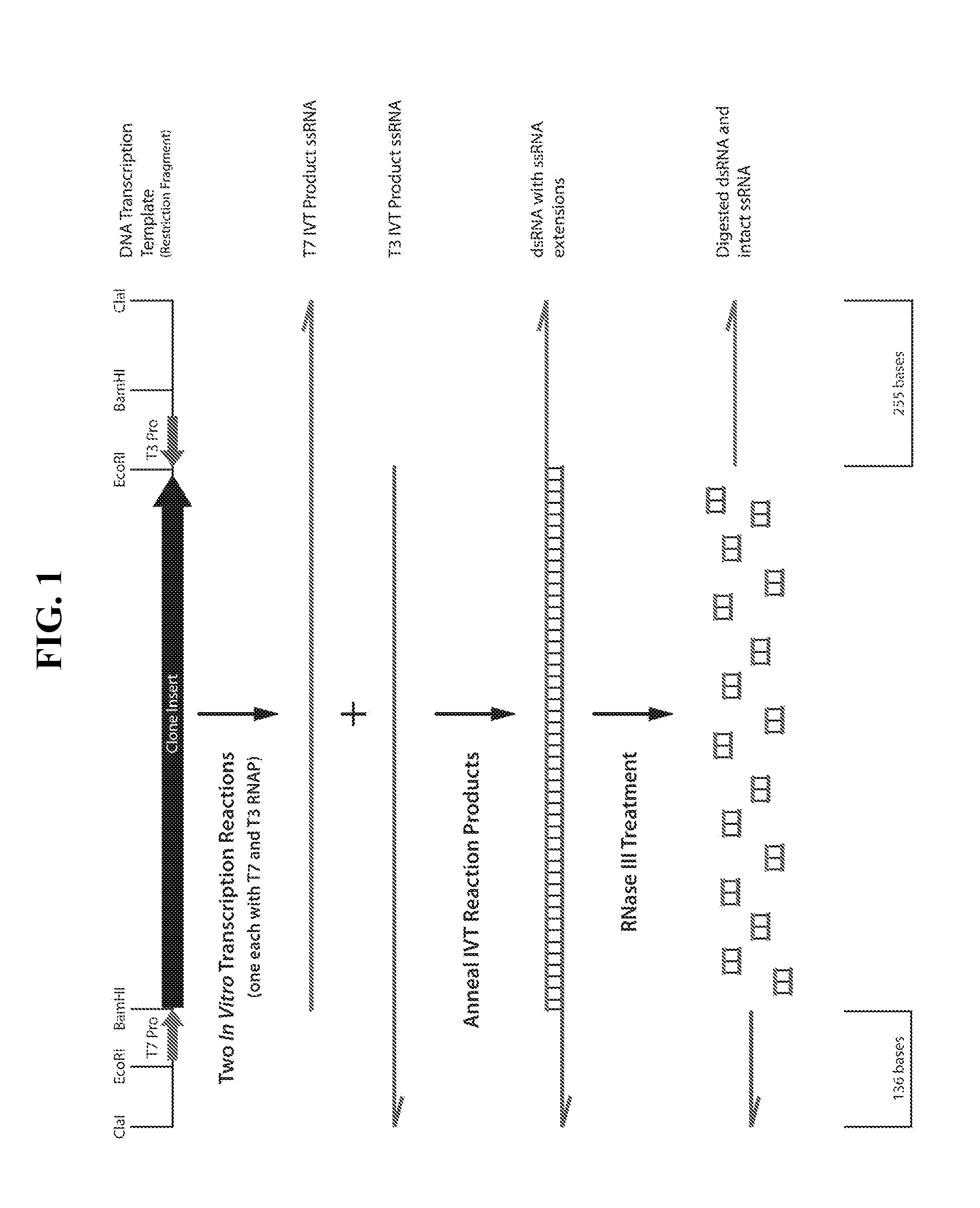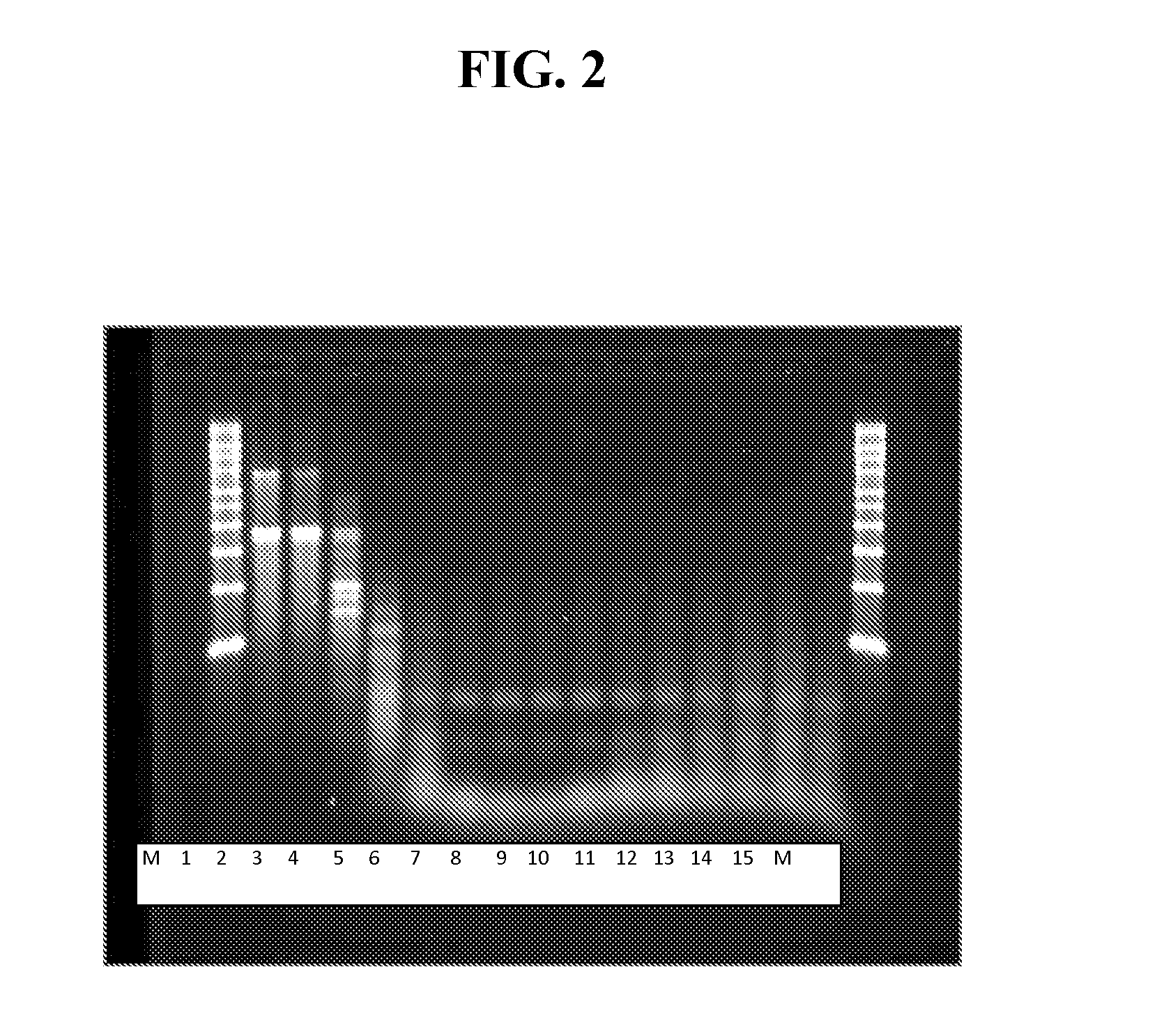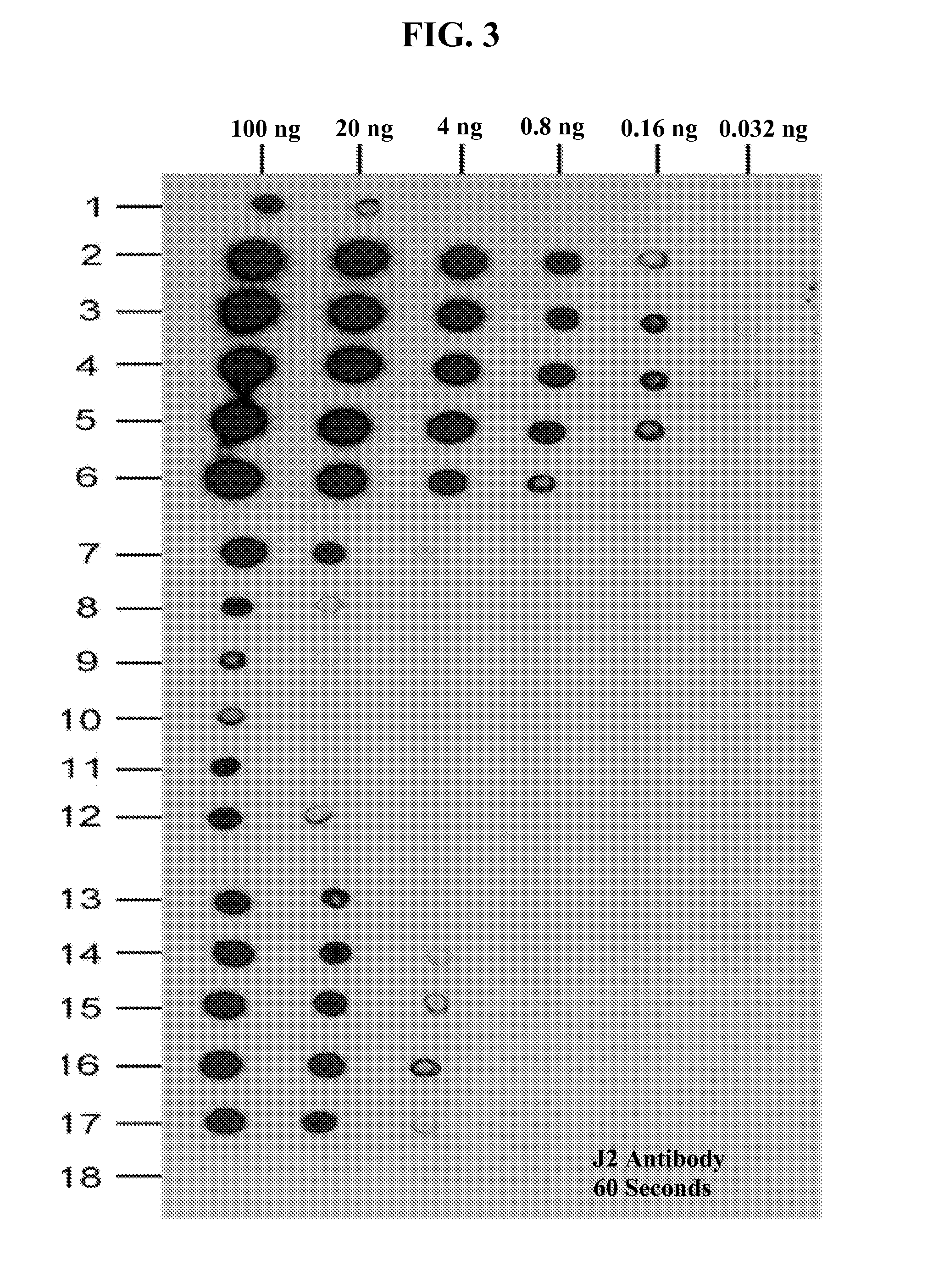Compositions and methods for reprogramming mammalian cells
- Summary
- Abstract
- Description
- Claims
- Application Information
AI Technical Summary
Benefits of technology
Problems solved by technology
Method used
Image
Examples
example 1
Magnesium Cation Concentration During RNase III Treatment has Important Effects on ssRNA Integrity and the Completeness of RNase III Digestion of dsRNA
[0426]One microgram of dsRNA was treated with 20 nanomolar RNase III in reaction buffers containing from 0 to 10 mM magnesium acetate in the buffer. The ideal treatment conditions would digest the 1671-nucleotide long dsRNA region of the transcript and leave two single-stranded RNA fragments of 255 and 136 nucleotides in length intact (FIG. 1).
[0427]As shown in FIG. 2, the dsRNA band was digested by the RNase III. Most importantly, the ssRNA bands were of the correct size and intact, based on minimal smearing below the bands, at magnesium acetate concentrations between about 1 and 4 mM. The fact that the amount of smearing below the ssRNA bands steadily increased, beginning at about 5 mM and steadily becoming worse as magnesium acetate concentrations increased to 10 mM, indicated that an optimal concentration of magnesium acetate for ...
example 2
The Effects of Divalent Magnesium Cation Concentration on the Completeness of RNase III Digestion of dsRNA is Detectable Using dsRNA-Specific Monoclonal Antibody J2
[0429]Different known amounts of a dsRNA substrate were digested with using the RNase III treatment in the presence of different concentrations of divalent magnesium cations and then the amounts of detectable dsRNA remaining were analyzed by dot blot assays using the dsRNA-specific monoclonal Antibody J2.
[0430]As was previously reported (Leonard et al., 2008), dsRNA stretches of 40-bps or more are needed to dimerize TLR3s to elicit an innate immune response. Antibody J2 can recognize dsRNA of 40-bps or more. Accordingly, the J2 monoclonal antibody was chosen because it can recognize only biologically relevant sizes of dsRNA that will induce interferon production through activation of TLR3.
[0431]The dot blot assay results, as depicted in FIG. 3, show that the digestion of dsRNA contaminants by RNase III varied with the con...
example 3
Effect of Mg2+ Cation Concentration on Completeness of dsRNA Digestion by RNase III Compositions as Detected Using dsRNA-Specific Monoclonal Antibody K1
[0432]Samples containing different known amounts of dsRNA were treated with RNase III in the presence of varying amounts of divalent magnesium cations and then analyzed by dot blot assay for the amount of dsRNA remaining using the monoclonal antibody K1 after RNase III treatment.
[0433]As discussed in EXAMPLE 2, dsRNA stretches of 40 bps or more are needed to dimerize TLR3s to elicit an innate immune response. Similar to the J2 monoclonal antibody, monoclonal antibody can recognize dsRNA of 40-bp or more. Accordingly, this antibody was chosen because it can recognize only biologically relevant dsRNA pieces that will induce interferon production through activation of TLR3.
[0434]The results, as depicted in FIG. 4, shows that the ability to digest dsRNA contaminants varied based upon the concentration of divalent magnesium cations used f...
PUM
| Property | Measurement | Unit |
|---|---|---|
| Fraction | aaaaa | aaaaa |
| Molar density | aaaaa | aaaaa |
| Molar density | aaaaa | aaaaa |
Abstract
Description
Claims
Application Information
 Login to View More
Login to View More - R&D
- Intellectual Property
- Life Sciences
- Materials
- Tech Scout
- Unparalleled Data Quality
- Higher Quality Content
- 60% Fewer Hallucinations
Browse by: Latest US Patents, China's latest patents, Technical Efficacy Thesaurus, Application Domain, Technology Topic, Popular Technical Reports.
© 2025 PatSnap. All rights reserved.Legal|Privacy policy|Modern Slavery Act Transparency Statement|Sitemap|About US| Contact US: help@patsnap.com



